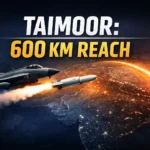✍️ By Ch Haroon Rashid
📅 Published: September 1, 2025
Pakistan’s water lifeline the Indus River System is deeply tied to Tibet (China) and India. Many rivers entering Pakistan originate in Tibet or are glacier-fed from the Himalayas. Understanding this geography is vital for water security, agriculture, and regional geopolitics.
This analysis provides a strategic breakdown of rivers flowing from China (Tibet) into India, and eventually joining rivers that sustain Pakistan.
🌊 Key Rivers Flowing from Tibet
1. Indus River (Sindh)
- Origin: Lake Mansarovar, Tibet (China)
- Path: Tibet → Indian-occupied Ladakh → Gilgit-Baltistan (Pakistan) → Across Pakistan → Arabian Sea
- Significance: The backbone of Pakistan’s water system.
- Sutlej River
- Origin: Lake Rakshastal near Mansarovar, Tibet
- Path: Tibet → Himachal Pradesh → Punjab (India) → Pakistan (Sulemanki, Islam Headworks) → Panjnad → Indus
- Note: Joined by the Beas River in Indian Punjab.
- Brahmaputra River
(Not part of Pakistan’s system but key to Tibet–India hydrology)

- Origin: Mansarovar–Angsi Glacier, Tibet
- Path: Tibet (as Yarlung Tsangpo) → Arunachal Pradesh → Assam → Bangladesh (as Jamuna)
- Note: Flows eastward, not into Pakistan.
- Jhelum River
- Origin: Verinag Spring, Kashmir (glacier-fed from Tibet’s Himalayas)
- Path: Kashmir → Mangla Dam (Pakistan) → Chenab → Panjnad → Indus
- Chenab River
- Origin: Confluence of Chandra & Bhaga rivers, Himachal Pradesh
- Path: Himachal → Punjab (India) → Pakistan (Marala) → Panjnad → Indus
- Beas River
- Origin: Beas Kund, Himalayas (near Rohtang Pass, glacier-fed)
- Path: Himachal Pradesh → Punjab (India) → joins Sutlej → Pakistan
- Ravi River
- Origin: Chamba, Himachal Pradesh (glacier-fed)
- Path: Himachal → Punjab (India) → Pakistan → Chenab → Indus
🔍 Summary Table
River
Origin (China/Tibet/Glaciers)
Enters India at
Joins in Pakistan
Indus
Mansarovar Lake, Tibet
Ladakh
Main river (Sindh)
Sutlej
Rakshastal, Tibet
Himachal Pradesh
Panjnad → Indus
Jhelum
Western Himalayas, Kashmir
J&K
Chenab → Indus
Chenab
Himachal (near Tibet glaciers)
Punjab
Panjnad → Indus
Beas
Rohtang Himalayas (glacier-fed)
Himachal Pradesh
Sutlej → Indus
Ravi
Chamba, Himachal (glacier-fed)
Punjab
Chenab → Indus
📜 Historical Timeline of Indus Basin Development
Year
Event
Significance
3300 BCE
Indus Valley Civilization flourishes
Early river-based settlements.
7th Century BCE
Sutlej, Beas, Ravi, Chenab settlements
Agricultural backbone emerges.
19th Century
British Raj irrigation canals
Punjab becomes breadbasket.
1947
Partition of India & Pakistan
Water rights disputes begin.
1960
Indus Water Treaty signed
Western rivers for Pakistan, Eastern for India.
1970s–1990s
Mangla & Tarbela dams built
Irrigation, flood control, power generation.
2000s
Indian dam projects rise
Water security concerns grow.
2020s
Climate change impacts glaciers
Indus Basin faces stress.
2025
Current mapping of Tibet–India–Pakistan hydrology
Strategic importance reaffirmed.
🔗 Related Articles









